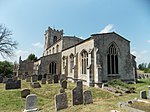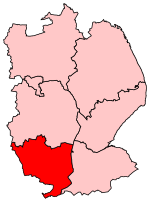Corby Glen railway station
1852 establishments in EnglandDisused railway stations in LincolnshireFormer Great Northern Railway stationsLincolnshire railway station stubsPages with no open date in Infobox station ... and 3 more
Railway stations in Great Britain closed in 1959Railway stations in Great Britain opened in 1853Use British English from August 2015

Corby Glen railway station was a station on the Great Northern Railway main line serving Corby Glen, Lincolnshire. It was west of the village on the Melton Mowbray road, and was originally named just Corby, but was renamed to avoid confusion with Corby station on the Midland Railway in Northamptonshire. The station closed in 1959.
Excerpt from the Wikipedia article Corby Glen railway station (License: CC BY-SA 3.0, Authors, Images).Corby Glen railway station
Station Road, South Kesteven Corby Glen
Geographical coordinates (GPS) Address Nearby Places Show on map
Geographical coordinates (GPS)
| Latitude | Longitude |
|---|---|
| N 52.808333333333 ° | E -0.53861111111111 ° |
Address
Station Road
Station Road
NG33 4LB South Kesteven, Corby Glen
England, United Kingdom
Open on Google Maps











